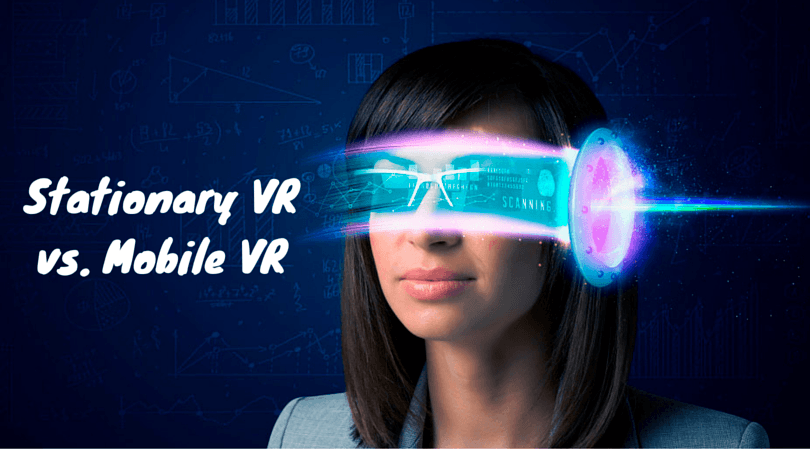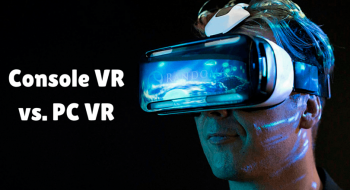We’ve already taken you through the battle of Console VR vs PC VR, and now it’s time to evaluate the other side of the spectrum, Mobile VR. Since the release of augmented reality and virtual reality, Samsung and Apple have produced applications to support the newest mobile accessories. Google Glass and Samsung Gear VR have led the way as the most well-known headsets for mobile applications, but can they stand up to the stiff competition of PC VR? Take a look at what each system has to offer and how they stack up next to some of the most popular gaming platforms in the world.
Samsung Gear VR
The first thing you’ll notice when landing on the Gear VR page is the highlighted 360 degree view inside the headset that can take you anywhere you want to be. Along with that, the headset promises to be completely mobile, allowing you take your VR experience to any world without a single wire attached to you. These are all great features that come at an affordable price of only $79.99. Unfortunately, these upsides do come with their set of downsides. The full “VR Experience” that the Gear VR promises isn’t exactly achieved the way a PC would do it. You can immerse yourself in diverse adventures and an array of virtual games, but the system doesn’t exactly seem to be the most convenient. The touch pad that controls what you do in each game and experience doesn’t allow you to move your hands the proper way you’d like in order to play the game with a natural feel. This may be the limitation that the Gear has that will halt it from ever combatting the stationary systems.
Google Cardboard
It says it in the name. It’s made out of cardboard. Google Cardboard does have its advantages. It’s extremely cheap. It’s currently offered at only $15 and involves a multitude of apps that can make use of it. Some of these apps include Cardboard Camera, which can allow you to relive moments of your life in virtual reality. Another popular app involved with Cardboard is YouTube, but do you see the pattern here? You guessed it, there isn’t a game. Unfortunately the lack of a controller that Cardboard offers only gives the selected system the chance to experience a view or adventure. The interactive experience is what most people are looking for when purchasing a VR system and if you’re not able to play and control your every moment, then it seems to take away from the overall idea. These cons can outweigh your gaming fever, but because of its success in bulk with educational opportunities it’s still proven useful in the right situations.
Comparison to PC VR
There is some middle ground between both PC VR and mobile VR. Both platforms are revolutionary to the technology field, and no one can deny that. They both allow you to get first hand experiences that would normally cost you hundreds of dollars just to visit. It may not be a massive similarity, but they both stick to what VR truly is. The overall issue with Mobile VR compared to PC VR is the limited amount of options that you have to immerse yourself in a complete virtual experience, and the limited mobility that the wireless headsets offer you. When it comes down to it, Virtual Reality is meant to be an interactive experience that immerses you completely into another world. Mobile VR gives you a small taste of what that actual objective of the practice is, but just isn’t able to compete quite yet. One other major difference between the two is that PC VR stays true to its potential while mobile VR does not. PC VR is meant to be played in a secure area considering the fact that you are attached by a cord that ultimately limits your movement in a room. Mobile VR may have the word “mobile” in it but it really doesn’t serve that title. Unfortunately, you still have to be in a secure area to play even though you’re technically on the go. No one can truly keep a headset on in public and blend in like every human being in the area. In conclusion, PC Virtual Reality is the most ahead of its time while serving the complete experience.







No comments yet